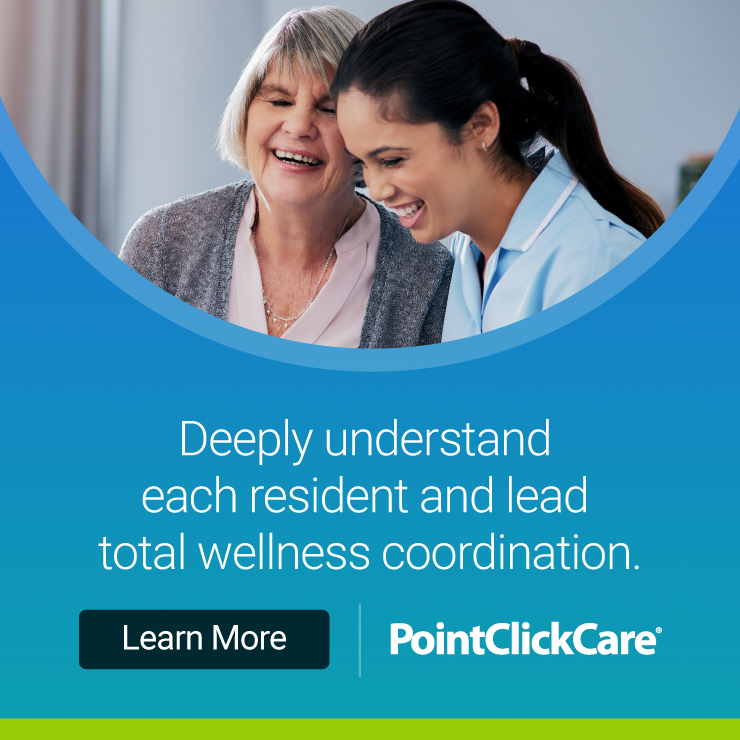By Susan Saldibar
Sometimes technology just happens to be in the right place at the right time. Remember after 9/11, how nervous we were about hopping on planes to attend business meetings? Enter Webex and GoToMeeting. Just when we needed them most. Right technology. Right time.
Now we’re seeing it happen again with the COVID-19 pandemic — especially in senior living communities. Families can no longer visit their loved ones in person. And technology has, once again, stepped in. Video calling apps, like Zoom, as well as virtual tours, are becoming part of daily communications.
Which leads me to a piece of technology many of us use personally in our daily lives— the tablet. It has become an emotional lifeline for many residents, connecting them to their loved ones from their homes. So, it’s not surprising that, when COVID-19 hit, tablet demand would skyrocket. And it did.
Pivoting from the Big Touch Screen to the Tablet, iN2l Met a Surging Demand Almost Overnight.
iN2L, the pioneer of content engagement (and a Senior Living Foresight partner), was well-positioned to respond. They had just rolled out a new “one-touch video chat” application for their iN2L tablet. It was a bold move for the company known for their large touch screen formats. And it proved a fortuitous move as well.
“With the pandemic, we’ve seen an exponential increase in communities looking to us to help them engage residents in new ways,” says Lisa Taylor, iN2L CEO. According to Lisa, iN2L also experienced a huge influx of requests from communities looking for help connecting residents to families with video chat platforms.
“We know that community staff were overwhelmed with scheduling and facilitating video calls with families. And that they were also having to solve for delivering engagement on an individual level. So we wanted to ensure our tablet alleviated some of that pressure,” she explains. “It was important to us to include a video chat tool that was so easy to use that residents could initiate video calls on their own.”
The team got to work and, within a couple of weeks, rolled out an enhanced tablet that includes a senior-friendly video chat feature, which lets a resident press one button and be automatically connected to loved ones. Pretty cool stuff.
The Key Was to Add Important Features, Like Telehealth, to Support a COVID-19 and Post-COVID-19 World.
The iN2L tablet comes packaged with over 1,000 pieces of content, organized into easy-touch icons on the home screen. Content covers a range of topics and interests, and they’ve added a COVID-19 button with information and resources, as well as fun activities to do in quarantine.
What Lisa is really excited about, though, is that iN2L’s new video chat feature can be used for telehealth during the pandemic. The feature allows a resident to keep their scheduled appointments with physicians and other providers as video visits. No more downloading of interfaces and having to input a lot of data. COVID-19 may have pushed the envelope on telehealth but, by most accounts, it is a technology that is here to stay.
Operators Can’t Afford to Put Off Investments into Technology.
Lisa also touched on some of the challenges that lie ahead for senior living communities as they begin to look at their world, post-pandemic. Getting occupancy back on track and regaining some of the revenues lost will be uppermost in their minds. And yet the need to provide ongoing content engagement using tablets will only continue to grow.
“Technology is no longer a ‘nice to have’ in senior living, it’s essential,” Lisa says. “It’s power, water, and technology. You can’t operate successfully without it.” Lisa adds that iN2L expects to see communities putting more of their budgets toward technology platforms.
“We’re having conversations already that indicate communities are interested in exploring different ideas of how they can improve the resident experience with technology,” she says. “There is definitely a focus on models that enable them to provide engagement devices at the individual level.”
Helping Solve Problems Made Worse by COVID-19 — Like Social Isolation.
I spoke with Lisa about the ICAA COVID-19 Senior Living Industry Task Force, of which iN2L is a member. The task force, consisting of a variety of senior living thought leaders, was created to look at how the coronavirus has changed the industry and how to navigate a forever altered, post-COVID-19 environment. One area of interest is how new technologies can help solve issues exacerbated by the pandemic.
“Social isolation, as an example, has always been a problem, but the pandemic really put a spotlight on it,” Lisa says. And, she believes, the tablet is having a greater than anticipated impact. “We like to say that these tablets represent a non-clinical intervention to help with clinical outcomes. By engaging this way, we can reduce anxiety, depression, and other potential negative health impacts of social isolation without medical intervention.”
That, in and of itself, is pretty amazing. But, according to Lisa, the plan is to go much further. “Tablets became a necessity almost overnight,” Lisa says. “So we delivered them. Now it’s all about where we can go with the technology.”
Should be interesting. Stay tuned.
In the meantime, you can download The Engagement Imperative, an iN2L case study that looks at four senior living communities and how they have optimized their use of engagement technology to both benefit their residents and meet their business goals. You can download it here.








